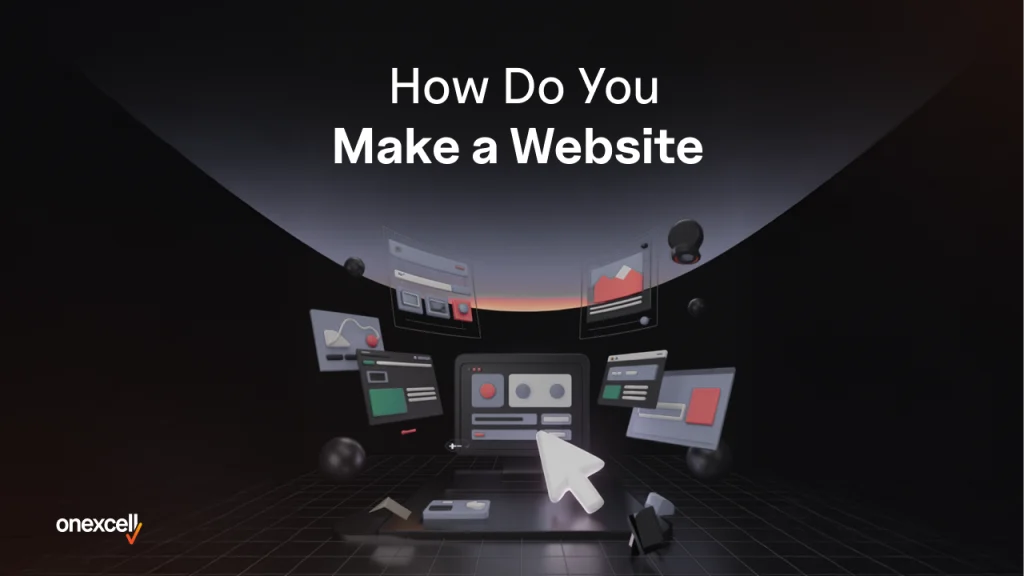A website is a collection of web pages accessible through the internet, designed to share information, promote services, or interact with users. It lives on a server and is accessed through a browser using a domain name.
To build a website, you need to know your online goals, target audience, timeline, and budget. These factors shape the design, platform choice, and how much time and money you’ll need to invest.
The essentials to build a website include a domain name, web hosting, a CMS or website builder, and your content, like text and images. These tools work together to create a functioning and professional site.
The WordPress development process of a website includes planning the layout, designing the pages, adding content, testing on different devices, and launching. After launch, ongoing maintenance like updates and backups keeps the site running smoothly.
What Should You Know Before You Start Building a Website?
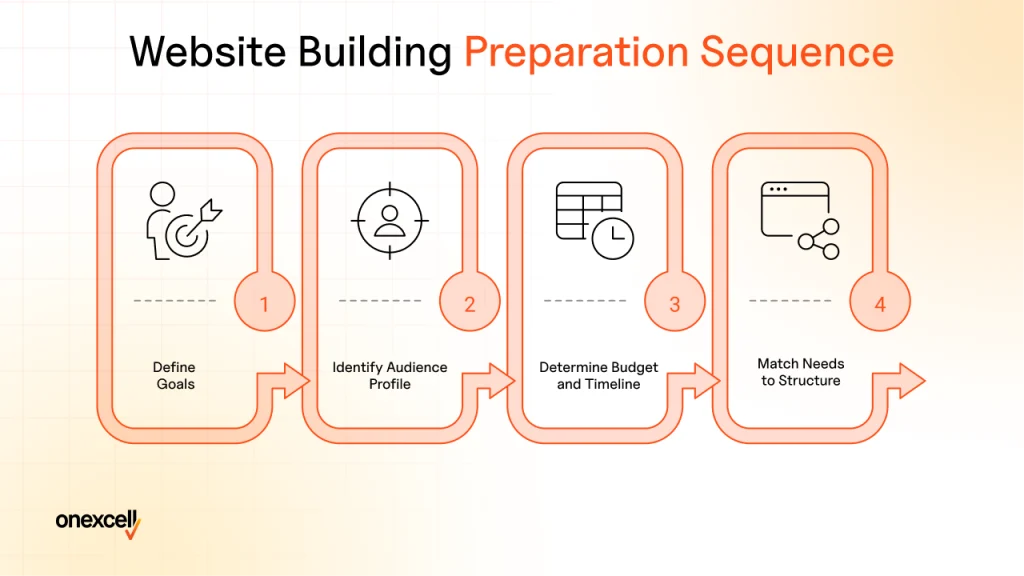
The things you should know before you start building a website include your online goals, your audience profile, and how much time and money you’re willing to invest. First, ask yourself what the site is meant to do. Are you trying to showcase a portfolio, start a blog, sell products, or promote a business? This defines your site’s purpose, and it shapes everything from design to content.
Think about who you’re building it for. Your audience profile, whether it’s potential customers, readers, or clients, will help guide your style, tone, and layout. A clean portfolio won’t look like an e-commerce site, and that’s intentional.
Then there’s your budget and timeline. Some sites cost almost nothing if you use free tools, while others require hundreds or even thousands of dollars, depending on your needs. Your website cost factors include domain name, hosting, premium themes, and potential developer fees.
Understanding your web design expectations early saves time and helps you avoid unnecessary expenses. When your business needs match your website structure, you’re set up to succeed from the start.
Can You Make a Website for Free?
.Yes, you can make a website for free using free website builders like Wix (free plan), WordPress.com, and a few others. These platforms let you create a website for free. But there’s a catch: free websites come with limitations.
You’ll often have ads on your site, no custom domain (your URL might look like yourname.wixsite.com), and only basic features. If you want full control, more storage, or to remove branding, you’ll need to upgrade to a paid plan.
How long does it take to build a website?
It takes anywhere from a few hours to several weeks to build a website. A simple DIY site takes a day using builders like Wix or WordPress, while a complex custom site may take 4–8 weeks or more.
Your web project timeline depends on factors like your content readiness, design complexity, whether you’re working alone or hiring a developer, and how fast you give and receive feedback. The more organized you are, the faster the time to build a website.
What Are The Essentials You Need To Build A Website?
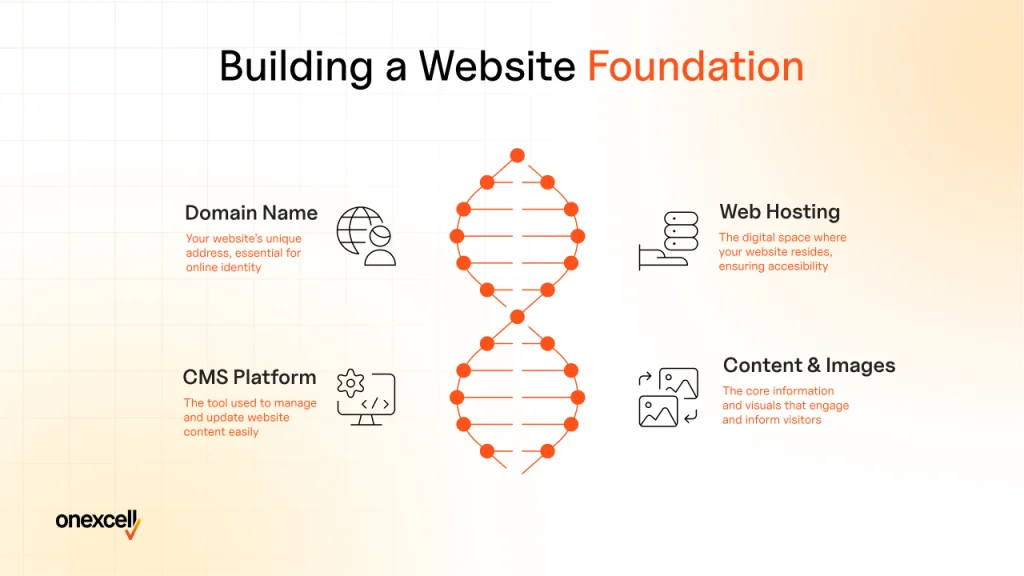
The essentials you need to build a website are a domain name, web hosting, a website builder or CMS (like WordPress), and your content (text, images, videos). These tools form the core foundation for getting your site online and looking professional.
The most essential things to build a website include the following:
- Domain Name: This is your website’s address (like yourbusiness.com) and it’s what people type to find you. You get it through domain registration platforms like GoDaddy or Namecheap. A custom domain builds trust and gives your brand a professional look.
- Web Hosting: Hosting is where your website lives on the internet. It stores your site’s files and makes them accessible 24/7. Some builders like Wix or Squarespace include web hosting, while others like WordPress require separate hosting.
- Platform or CMS (Content Management System): This is the tool you use to build and manage your site’s content. A CMS like WordPress makes it easy to update text, add pages, and manage your layout without knowing how to code. Other platforms like Shopify or Wix offer similar visual editors with built-in tools.
- Content and Images: Your written content, media files, and business info make up the soul of your site. Clear headlines, strong calls to action, and high-quality images help visitors understand what you offer. Get these ready before building to save time and keep your site cohesive.
What Is Web Hosting And Which Type Is Right For You?
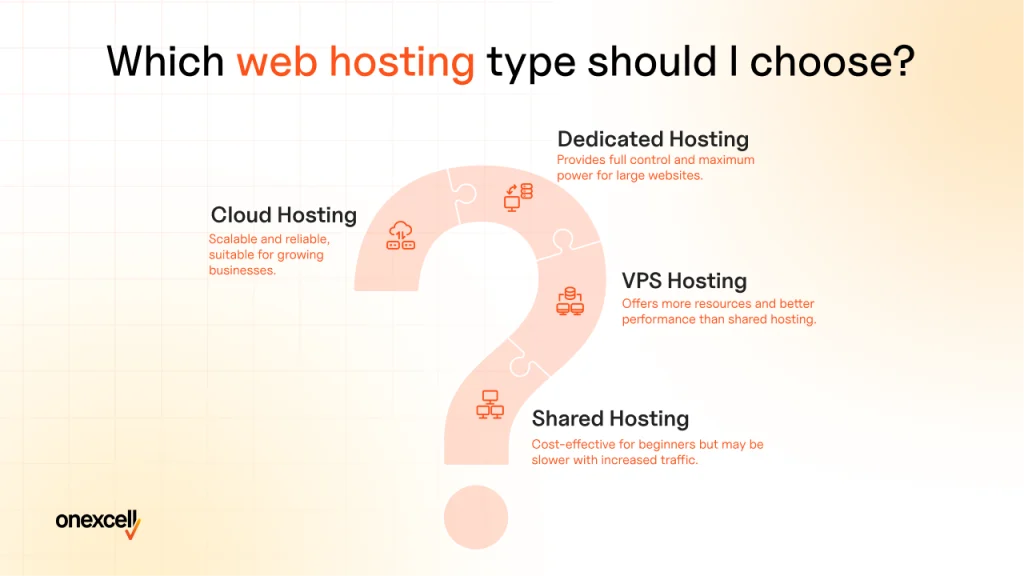
Web hosting is the service that stores your website’s files on a server and makes them available online. Without hosting, your site can’t be seen on the internet. Hosting providers like GoDaddy and Bluehost offer different types of plans depending on your needs, budget, and traffic expectations.
Here are the main types of hosting:
- Shared Hosting: You share one server with many other websites. It’s cheap and great for beginners, but slower and less secure when traffic increases.
- VPS (Virtual Private Server): Still shared, but gives you more resources and better performance. Ideal if you’re outgrowing shared hosting but not ready for a full server.
- Dedicated Hosting: You get your own server, full control, and maximum power. Best for large websites with high traffic or complex needs.
- Cloud Hosting: Your site is hosted across multiple servers, offering flexibility and reliability. It’s scalable and good for growing businesses.
When choosing a host, consider uptime (reliability), bandwidth (traffic limits), pricing plans, and customer support. The right hosting depends on how much traffic you expect, how fast you want your site to load, and your technical experience.
Which Platform Or Tool Should You Use To Build A Website?

The platforms or tools you should use to build a website include drag-and-drop builders, no-code platforms, and open-source CMS tools. Your choice depends on your site needs, tech skills, and goals.
The tools used to build a website include the following:
- Wix: A user-friendly drag-and-drop builder perfect for portfolios, small business sites, or personal projects. No coding needed and includes hosting, templates, and apps. Great if you want to go live fast with a clean design.
- Squarespace: A sleek no-code platform often used by creatives and professionals. It offers polished templates, built-in eCommerce tools, and blogging features. Ideal for photographers, designers, or anyone focused on visuals.
- Shopify: A specialized platform for eCommerce. It comes with everything you need to sell products online, from payment processing to inventory tools. Best for online stores and retail businesses.
- WordPress.org (Self-Hosted): An open-source CMS used by millions. It’s flexible and supports everything from blogs to complex business sites. You’ll need to manage hosting and plugins, but you get full control.
- WordPress.com: A hosted version of WordPress for simpler use, though more limited than the self-hosted option. Better for blogs and small sites if you don’t want to handle technical stuff.
- Webflow: A more advanced no-code tool that gives you full design freedom and CMS control. It’s best for designers, startups, and marketing teams that want custom layouts without code.
Website builders like Wix and Squarespace are easier and faster to use with built-in hosting. A CMS like WordPress or Webflow offers more flexibility and long-term scalability but may need more setup and maintenance.
Which Website Builder Is Best For Beginners?
For beginners, the top three website builders are Wix, Squarespace, and WordPress.com. These platforms offer ready-made templates, simple user interfaces, and tons of tutorials to help you get started.
Wix is great for drag-and-drop ease, Squarespace has beautiful design options, and WordPress.com balances blogging tools with simplicity. All three have low learning curves, built-in support, and features that let you build without needing to code.
How Do You Structure And Design Your Website?
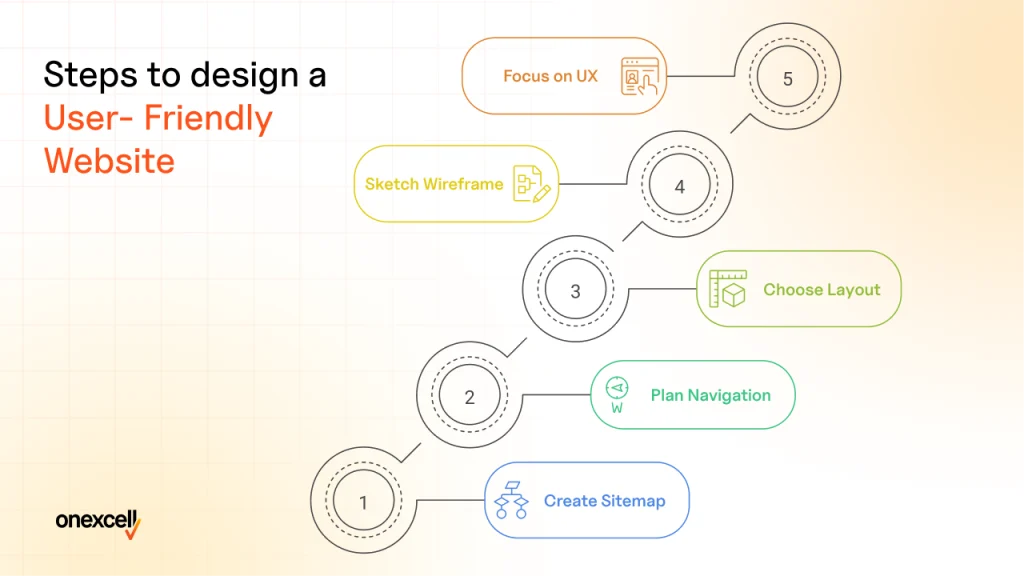
You structure and design your website by organizing your pages around your main goals and making sure each page guides visitors clearly. Use a clean layout, consistent colors, easy navigation, and strong calls to action to keep your design user-friendly and focused.
Here’s how to plan your website’s layout and user experience (UX) step by step:
- Create a Sitemap: Start by mapping out the main pages your site will need—usually Home, About, Services/Products, Blog, and Contact. This gives you a clear page hierarchy and helps visitors find information easily.
- Plan Your Navigation: Keep your main menu simple with 4–6 top-level options. Good navigation guides the user journey, so use clear labels like “Shop,” “Book a Call,” or “Learn More.”
- Choose the Right Layout: Use common design principles like visual balance, white space, and logical flow. Stick to layouts people are used to, like a hero image at the top and a call to action button below.
- Sketch a Wireframe: Before building, outline each page using a wireframe—a simple sketch showing where headlines, text, buttons, and images will go. This keeps your structure intentional and avoids clutter.
- Focus on UX: Every design choice should make the site easier to use. Fast loading times, mobile responsiveness, and scannable content improve the overall experience.
What Content Should You Include On Your Website?
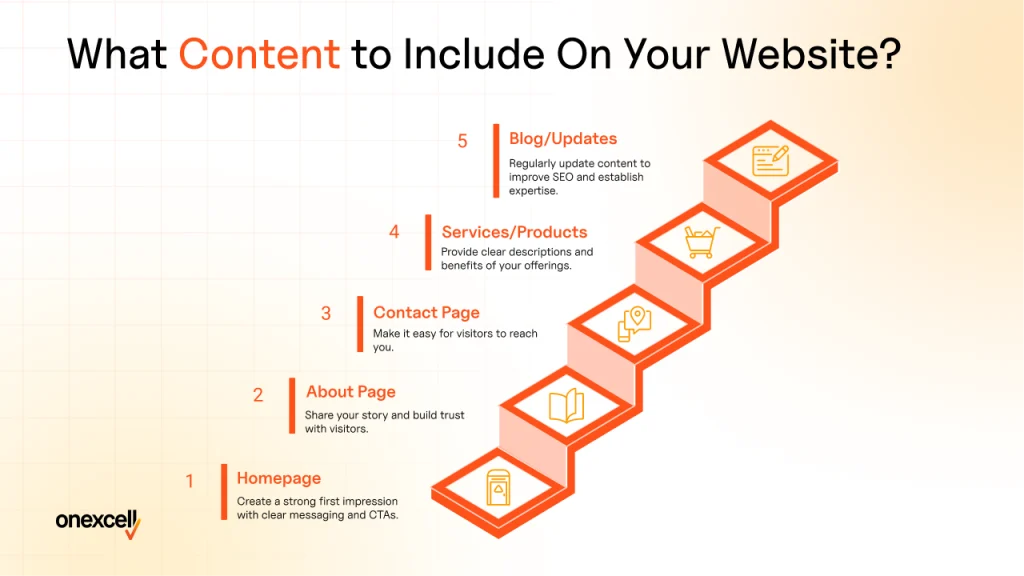
The content you should include on your website includes a homepage, an about page, contact information, your services or product pages, and possibly a blog or updates section.
Your homepage is your first impression; it should clearly state who you are, what you do, and include a strong value proposition with clear CTAs (calls to action). The about page shares your story, mission, and builds trust with visitors through your business profile and background.
The contact page should make it easy to reach you with a form, email, phone number, and even a map if you have a physical location. If you’re selling something, your services or product pages need clear descriptions, prices, features, and benefits written in focused web copy that reflects your brand messaging.
Lastly, a blog or updates section helps improve SEO and allows you to regularly provide helpful, relevant content that positions you as an expert in your field.
How Do You Write Compelling Content For Each Web Page?
You write compelling content for each web page by using persuasive copy, a clear structure, and a tone that matches your brand. On your homepage, grab attention fast with a strong headline, a clear promise, and a reason for visitors to stay. This is where you highlight your main value and use CTA buttons to drive conversion.
For your about page, focus on building trust by sharing your story, values, and the people behind your brand, and keep the content tone genuine and human. On the contact page, keep things simple and clear: include your contact info, location if needed, and a direct call to action like “Send a Message” or “Book a Call.”
Throughout the site, use short paragraphs, scannable formatting, and bold headings to guide readers and make your message easy to absorb.
How Do You Make Your Website Mobile-Friendly And Responsive?
You make your website mobile-friendly and responsive by using a mobile-first approach, choosing responsive templates, and testing how your site looks and works across different screen sizes.
A responsive design automatically adjusts your layout, fonts, and images to fit any device, whether it’s a phone, tablet, or desktop, so users get a smooth experience no matter how they access your site.
To test and optimize, use built-in tools like Chrome’s device emulator, Google’s Mobile-Friendly Test, or simply view your site on multiple devices. Make sure your loading speed is fast, buttons are easy to tap, and text is readable without zooming.
A mobile-friendly site doesn’t just improve user experience; it directly impacts your traffic and conversion rates.
How Do You Test Your Website On Different Devices?
You test your website on different devices by doing cross-device and cross-browser testing to make sure everything looks and works the way it should, no matter the screen or browser.
Use tools like Chrome DevTools’ mobile emulator, BrowserStack, or Responsively App to preview how your site performs across different viewports and devices. During testing, pay attention to fonts, button sizes, spacing, images, and interactive elements, make sure nothing overlaps, breaks, or feels too small to use.
These usability checks help you catch design issues early so you can deliver a consistent, user-friendly experience to every visitor.
How Do You Optimize Your Website For Search Engines (Seo)?
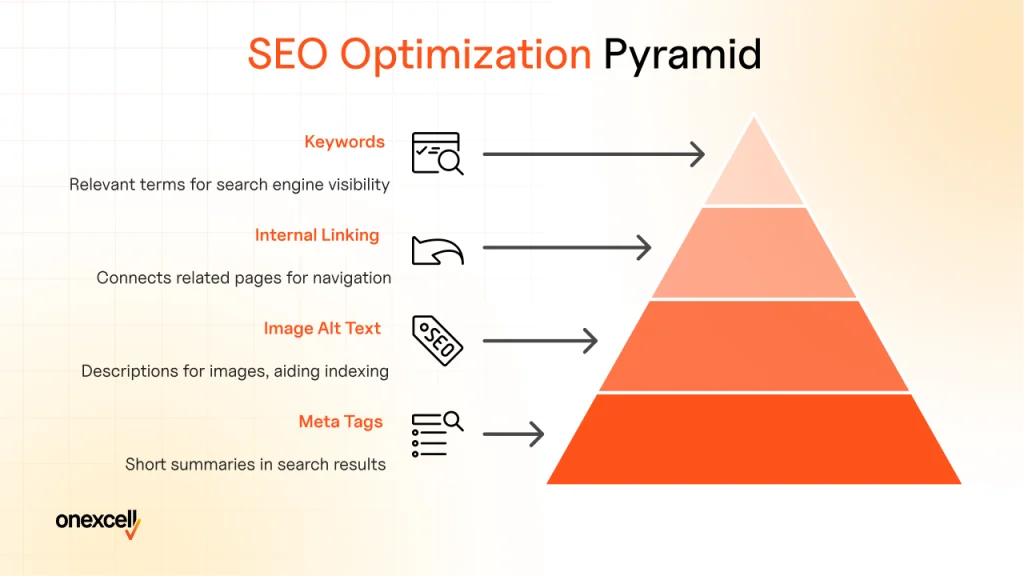
You optimize your website for search engines by using relevant keywords, writing clear meta descriptions, and organizing content with proper headings. Also, make sure your site loads fast, is mobile-friendly, and includes internal links to help both users and search engines navigate your pages.
Ways to optimise your website for on-page SEO fundamentals that help improve your search visibility and get your site indexed by Google include:
- Meta Titles and Descriptions: These are short summaries that show up in SERP (Search Engine Results Pages). Your meta title should include your main keywords and clearly describe the page, while the meta description gives a preview of the content. Writing strong meta tags helps improve click-through rates and tells search engines what your page is about.
- Image Alt Text: Alt text is a short description added to images that tells search engines what the image shows. It helps with Google indexing, improves accessibility, and adds SEO value when keywords are used naturally. Always write descriptive, relevant alt text for every image you upload.
- Internal Linking and Keywords: Internal links connect related pages on your site, making it easier for users to navigate and for search engines to crawl your site. Place links in relevant text and use anchor text that includes related keywords. This strategy spreads authority across your site and boosts ranking for your most important pages.
How Do You Launch And Promote Your Website?
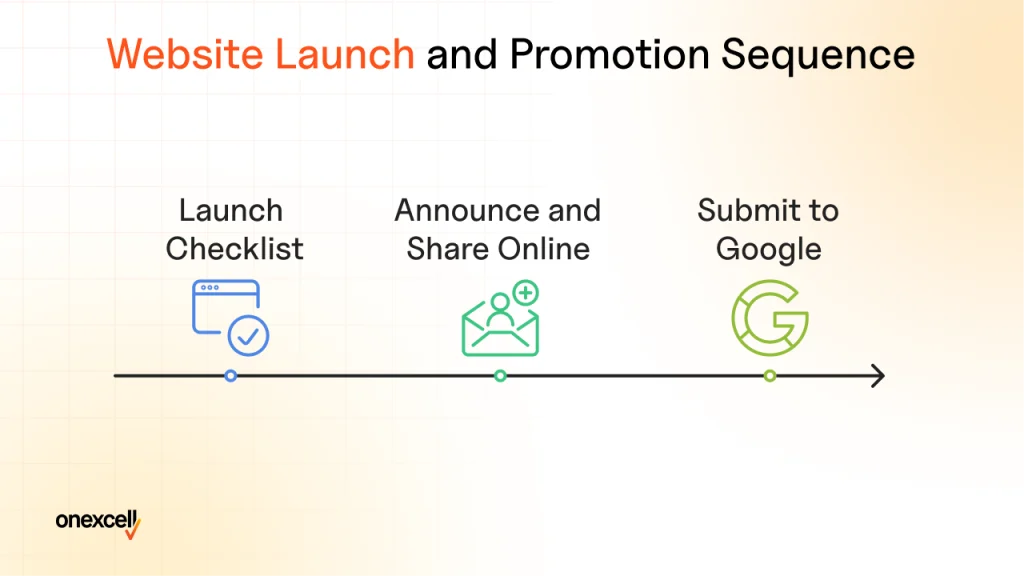
You launch and promote your website by announcing it across your social media channels, email list, and business contacts. Then, drive traffic by sharing valuable content, running ads if needed, and submitting your site to Google for indexing.
Here’s a simple checklist to guide your site launch and start attracting initial traffic:
- Launch Checklist: Double-check that all pages are working, links are functional, contact forms are tested, and mobile responsiveness is solid. Make sure your SEO basics—like meta tags and alt text- are in place. This helps avoid last-minute issues and ensures a smooth launch.
- Announce and Share Online: Post your launch on social media, send out an email blast, and consider a press release if it’s a major project. Use engaging visuals and clear CTAs to drive people to your new site. Encourage early visitors to share and give feedback.
- Submit to Google: Go to Google Search Console and submit your site’s sitemap to get indexed faster. This step tells Google your site exists and allows it to appear in search results. You’ll also be able to track performance from day one.
How Do You Maintain And Update Your Website Over Time?
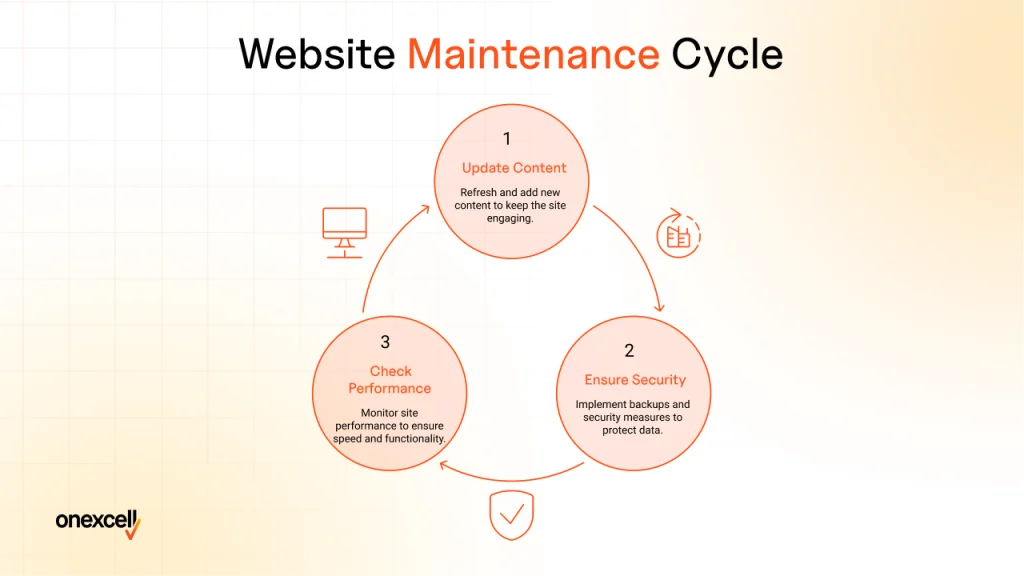
You maintain and update your website over time through regular content updates, security checks, and software/plugin updates. This keeps your site fresh, secure, and running smoothly, which helps with both user experience and search engine ranking. Ongoing website maintenance keeps your site secure, functional, and relevant.
Here’s how to manage and update your website for the long term:
- Updating Content: Refresh old blog posts, update service details, and add new pages as needed. Keeping content current improves SEO and keeps your visitors engaged. It also shows search engines your site is active.
- Backups and Security: Set up a backup schedule to regularly save your site’s data in case of crashes or hacks. Install updates for your platform, themes, and plugins to apply the latest security patches. Strong passwords and firewall tools also help protect your site.
- Performance Checks: Use uptime monitoring tools to track site availability and fix issues fast. Check for broken links, slow load times, and outdated features. A fast, smooth site keeps users happy and improves your rankings
Is It Hard To Build A Website By Yourself?
No, it’s not hard to build a website by yourself, especially with today’s beginner-friendly tools like Wix, Squarespace, and WordPress.com. These web development platforms offer templates, drag-and-drop editors, and guided setups that make the process simple even if you have zero coding experience.
However, if you want a custom design or advanced features, there may be a learning curve. Still, with a little patience and the right tutorials, most people can build a solid website on their own.
Do You Need To Know How To Code?
No, you don’t need to know how to code to build a website. Most modern website builders are no-code platforms with visual editors that let you drag, drop, and customize everything. That said, knowing a bit of HTML or CSS can help if you want to fine-tune your site, but it’s definitely not a requirement for getting started.
What’s The Best Way To Learn Website Building?
The best ways to learn website building include online courses, YouTube tutorials, and building practice sites. Platforms like WordPress Academy, Coursera, and free tutorials on YouTube offer step-by-step lessons tailored to all skill levels.
But nothing beats hands-on experience; the more you experiment and build, the faster you learn what works. Start with a simple site, test features, and gradually add more as you gain confidence.
